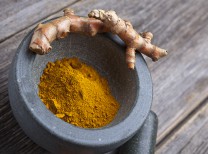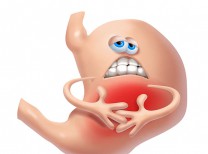The gallbladder is a small pouch that sits just under the liver. Its function is to store bile produced by the liver. After eating a fat-rich meal, the gallbladder contracts, emptying its contents into the small intestine to help digest the fat. Gallstones are hardened deposits of digestive fluid that can form in the gallbladder. There are two main types of gallstones depending on their composition. Cholesterol stones form in individuals with a genetic or environmental predisposition to bile that is supersaturated with cholesterol. They represent 75 percent of gallstones in the industrialized countries. Pigment stones are less common and associated with bacterial infection or parasitic infestation of the biliary system.
Gallstones are common, particularly in Western populations. In the United States, 6 percent of men and 9 percent of women have gallstones. Most individuals with gallstones are not symptomatic and gallstones are found incidentally on imaging studies done for other reasons. A majority of patients with incidental gallstones will remain without symptoms and prophylactic surgery is not needed as the risk of developing complications is low. If symptoms do occur, they are generally mild initially. Those individuals need to be educated about the symptoms of gallstone disease so they can seek treatment before more severe symptoms or complications develop.
Biliary colic is the term used to describe the most typical symptom of gallstone disease. The classic description is an intense, dull discomfort located in the mid- to right- upper part of the abdomen. The pain might radiate to the back and the right shoulder and is often associated with excessive sweating, nausea and vomiting. The pain is typically triggered by eating a fatty meal, but a significant number of patients have the pain only at night. It is not exacerbated by movement and is not relieved by squatting, bowel movements or passage of flatus. The pain lasts at least half an hour, plateaus within an hour, then starts to subside, with an entire attack usually lasting less than six hours. Pain that lasts more than six hours or is associated with fever, mental confusion, severe pain or excessive vomiting and dehydration is not biliary colic but rather an acute inflammation of the gall bladder and requires immediate attention in the emergency room.
Patients that present with biliary colic are usually recommended to undergo cholecystectomy, a surgery to remove the gallbladder. The surgery is done on an elective basis, as emergency surgery has higher risks of complications. The surgery is most often performed in an outpatient setting with minimally invasive surgery, either laparoscopic or by using the arms of a surgical robot that is controlled by the operating surgeon. The latter offers better visualization of the anatomy, better access to the operative field and lowers the incidence of having to do traditional open surgery. In rare circumstances, when the gall bladder is very inflamed or when there is extensive scar tissue from prior surgeries, the surgeon has to convert to open surgery through a 6- to 8-inch incision in the right upper portion of the abdomen to safely remove the gall bladder.
Dr. Ibrahim is a general surgeon and former assistant professor of surgery at the Cleveland Clinic. He is currently in private practice in La Quinta and is a member of Desert Doctors. (760) 837.7910. www.DesertDoctors.org.










































Comments (0)